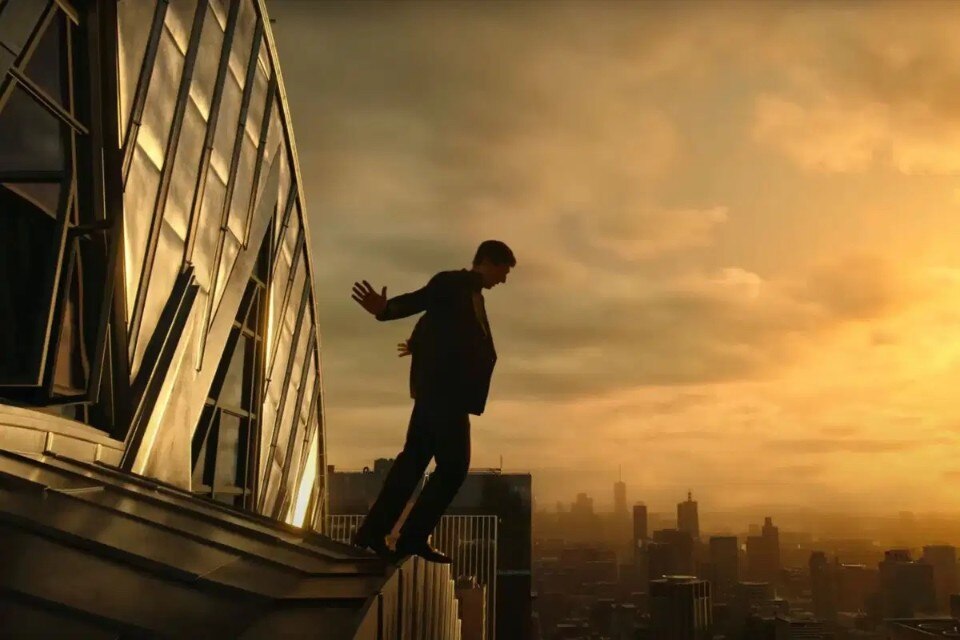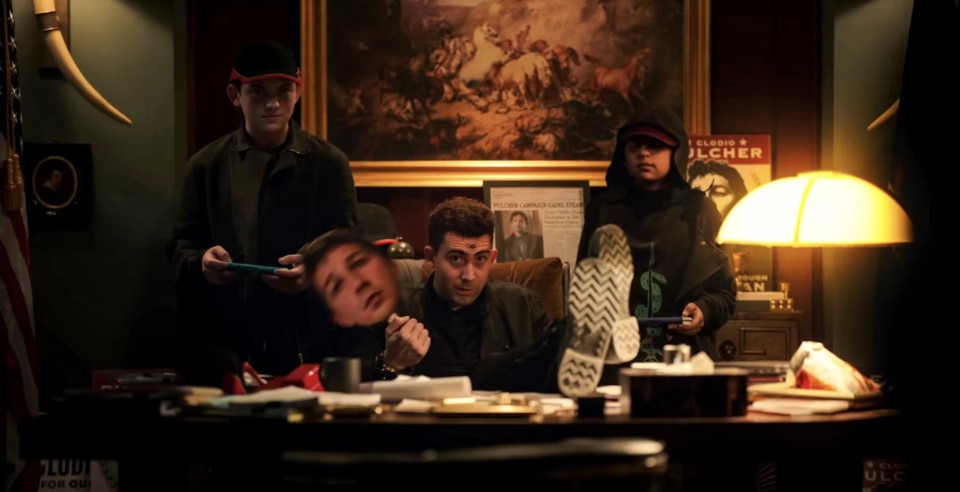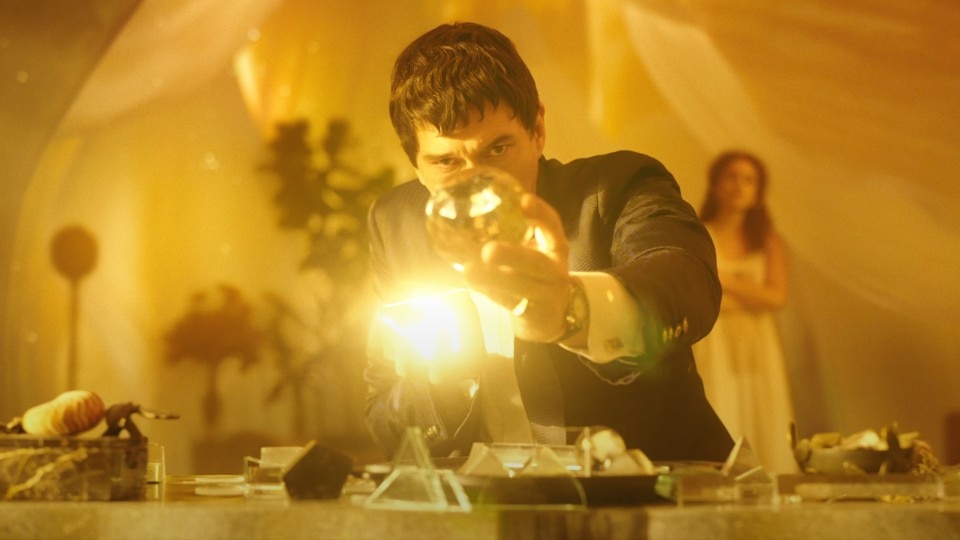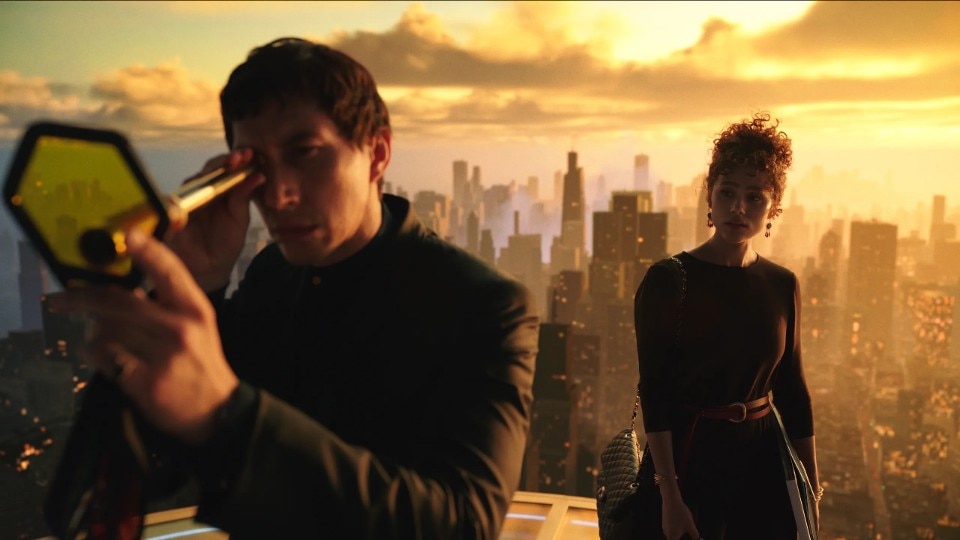Everything in Megalopolis speaks of architecture, yet, in reality, nothing speaks of architecture. The narrative follows an architect aiming to transform his city, (New York, which in this fantasy world is called New Rome) to rescue it from its state of decay brought about by a corrupt ruling class. However, it is ultimately the tale of an artist’s quest for creative freedom and, more generally, it is about art as a means to change society.
Architecture is only used as a metaphor; what Coppola actually discusses is the struggles of artists to integrate with the economic systems that support their art − the architect needs municipal funds to start his project. More specifically, he talks about himself, always at odds with Hollywood and yearning to merge within himself the irreconcilable: being both entirely independent and capable of producing films that reach major theaters.
The architect in this movie, named Catiline, clashes with a mayor called Cicero and the city’s wealthiest man, Crassus. This ancient Rome transposed to modern times America serves as an allegory of the West as a decadent Rome. It’s one of many heavy metaphors in a film that aspires to much but achieves little, and that little is heavy and confused. It is a movie on art that promotes an idealized vision − art can really shape a new society − and wants to do so by breaking all rules of its own art – cinema − but fails to coherently package this message, even in terms of architecture.

Megalopolis only truly addresses architecture to define its characters. The bold and revolutionary architect (Adam Driver), who invents a new material that doesn’t deteriorate and nor decay to build unprecedented structures, has his office at the top the Chrysler Building, in one of the Art Deco vaults, all − of course − decorated in Art Deco. In contrast, Mayor Cicero (Giancarlo Esposito) has a wood desk in a wood-paneled office reminiscent of traditional downtown New York, which doesn’t stand out for its clean lines but rather for its heaviness. With its clean Art Deco lines, the former represents modernist aspirations; while the latter symbolizes the backwardness of a bureaucratic system that wants to preserve the status quo.
It is a movie on art that promotes an idealized vision and wants to do so by breaking all rules of its own art – cinema − but fails to coherently package this message, even in terms of architecture.
When Adam Driver’s character comes out from the Chrysler Building’s vaults and overlooks the city from the peak of the highest place, envisioning new possibilities through technology − his innovative material − he truly personifies the American modernist instinct in which artistic drive is closely tied to technological progress. For a brief moment, Megalopolis captures the essence of architecture: the potential to reimagine spaces and thereby reorganize life and social order. However, the film soon betrays this vision, first of all through its disjointed form. Unlike other notable films about architecture, such as Synecdoche, New York (2008) or The Fountainhead (1949), Megalopolis doesn’t match its ambitious themes.

The film’s design often devolves into unintentional bad taste, particularly when it doesn’t channel styles and schools of thought and instead mimics ancient Rome, tackles current events, and styles Crassus (Jon Voight) just like Trump. The visual elements of Megalopolis are never on the level of its intent and ambition. And even worse happens when, after a series of plot twists and absurdities, unexpected pregnancies and loss of power – for some unknown reason the architect can stop time − his idea of the city of the future is finally visualized.
Replacing New York’s buildings with plant-like structures − not in the sense that they are inspired by the flora but that they mimic the exact shape of it – and without explaining how this explaining how this transformation leads to a better social structure, he portrays architecture as magic: something that produces a result without a process, but simply manifesting the creator’s will. If a film like Furiosa: A Mad Max Saga takes the time to show the functionality of its designs and objects and why certain things are built in a certain way in its future, imagining they are the result of the societal needs, Megalopolis doesn’t spend a single second explaining the revolutionary vision of its architect. The film lacks any effort to demonstrate the relationship between spaces − or even basic structures − and the people who inhabit them.

Despite the central goal of improving the world, the film never clarifies why these constructions and bold visions should succeed. In a particularly absurd scene, a character praises one of these partially-build constructions – bright as if it was made by a luminous material − by stepping onto a river of light that carries them like a moving walkway through a park. It is evident that Coppola imagines something along the line of what has already been done but wants to take it a step further: an urban architecture that incorporates natural elements. He wants to talk about a more sustainable world, one in harmony with nature, and a better future. However, the film conveys that this urban architecture prioritizes bold designs without establishing a connection to the lives of those who will inhabit these spaces.
It would be unreasonable to expect a filmmaker to possess an in-depth knowledge of architecture − it’s not their field. However, it is legitimate to ask for a faithful representation of the relationship between design, spaces, and their users, that is fundamental to any form of art: the interaction between the work and its audience. In his creative and libertarian zeal − Coppola self-financed Megalopolis by selling his vineyards and personally investing $120 million − he involves his architect and his creations in his quest for a creativity free from external constraints, imbuing him with the same avant-garde instinct as a filmmaker or painter, who might sometimes disregard their audience. However, an architect cannot overlook the human dimensions, including how people move, what needs they have, and how they interact with the spaces designed for them. It Megalopolis, this seems exactly the opposite.


